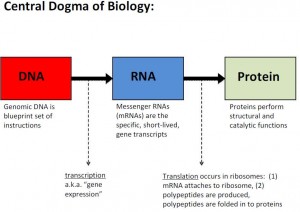Appropriate song to play while reading this post: Mat Kearney – Breathe In, Breathe Out This paper came out last month, and I thought it would be nice to briefly mention it here, even though many other papers have looked at the concentrations of airborne bacteria and viruses as well. In this study, done by Aaron Prussin …
By Amanda Makowiecki 1st Year Mechanical Engineering PhD Student Miller Research Group, University of Colorado Boulder Researchers at the University of Oregon recently published a paper examining the connection between architectural design and microbial diversity in our buildings (Kembel et al. 2014). Although occupancy type was identified as the strongest predictor of microbial variation, several …
Greetings from the Healthy Buildings Conference Committee! We are excited to be hosting Healthy Buildings 2015 America in Boulder, Colorado, at the University of Colorado Boulder. Healthy Buildings is a unique forum for built environment researchers and professionals to engage with innovative projects, products, and services and to meet and collaborate with colleagues working on …
Guest Blog Post by Dr. Nick Clements, PhD Post-doctoral Researcher, University of Colorado Boulder, Miller Research Group In the event of a disaster, hospitals must have plans in place for receiving a surge of patients with a variety of possible infectious diseases or conditions. Pandemic-causing infectious diseases, such as the viruses that caused the SARS …
These are just awesome: 4 Ventilation Quotes That Will Rock Your IAQ World. Maybe they are familiar to people who work on indoor air quality but I had never heard them . Thanks to the Energy Vanguard Blog for posting these. I particularly like “If there is a pile of manure in a space, do not try …
I wasn’t able to make it to the Indoor Air meeting this year but I followed the action on Twitter. Here’s a Storify of the tweets using the #microbenet hashtag which was primarily used at the Sloan-funded microbiology of the built environment session. [View the story “Indoor Air 2014 #microbenet hashtag” on Storify]
A group of us from Jonathan Eisen’s lab attended the General Meeting for the American Society for Microbiology (ASM) last month in Boston. A major highlight of the conference was “We Are Not Alone: Microbial Revelations of the Built Environment,” a symposium that was organized by the Junior Advisory Group that is made up of postdocs and …
Definitely worth checking this out: Illumination, lighting technologies, and indoor environmental quality – Nazaroff – 2014 – Indoor Air – Wiley Online Library. It is an editorial for Indoor Air and has many interesting bits. Of particilar interest to me and microBEnet is the part about how lighting affects the microbiology of indoor spaces and also …
Most of us spend most of our time indoors amidst suspended biological particles — spores, pollen, bits of dead skin, bacteria, viruses, and so on. We care about these particles because they may have human health impacts (positive or negative), effects on building materials, and possible forensic uses. Two sources known to be important for …
Jordan Peccia has posted the slides from his tutorial, Molecular methods for bioaerosol analysis on Slideshare. If you would like to get a quick overview of molecular-biology based methods, this is a painless, accessible way to do it. You are encouraged to post your comments and questions after you review the slideshow. We hope to …


